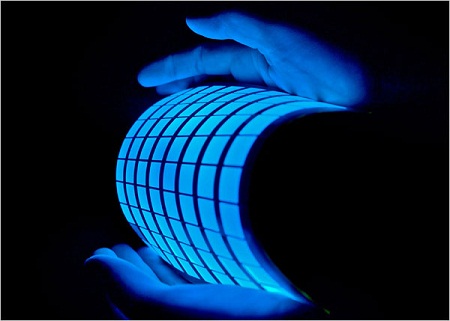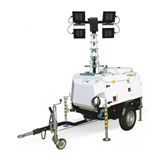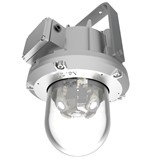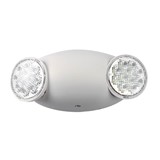Even with a drop in price of more than an order of magnitude over the course of this decade, Organic Light Emitting Diodes (OLED) will still remain uncompetitive compared to other lighting options, and will amount to a mere US$58 million ($58 million) market by 2020.
According to analyst Lux Research, despite the novel lighting technology’s potential to create cheap, pleasing lighting in unique, flexible form factors it is currently too immature and costly to challenge conventional incandescent, fluorescent and other emerging technologies such as LED lighting.
In its report entitled Finding the End of the Tunnel for OLED Lighting, the company suggests that OLED lighting costs will drop from US$18 ($18)/lumen (lm) today to US$0.71 ($0.71)/lm on glass and US$0.18/lm on flexible substrates by 2020.
Despite this marked improvement, OLED lighting costs will still lag behind competitive illumination sources. Incandescent light sources cost around US$0.001 ($0.001)/lm, compact fluorescent lights (CFL) come in at US$0.01 ($0.01)/lm and LEDs are about $0.025 ($0.025)/lm. This large price difference will limit broad adoption, says Lux Research.
"Developers are still looking for the ‘killer application’ for OLED lighting that will allow them to make initial sales and bootstrap their way to larger scale," Jonathan Melnick, a Lux Research analyst and the report’s lead author said.
"The problem is that OLED lighting is so much more expensive than incumbent and emerging alternatives – it’s only the most cost-insensitive markets that would use it for aesthetic value for the foreseeable future."
But while OLEDs won’t challenge incandescent, fluorescent or LEDs on a cost basis, Lux Research says they will find opportunities in designer lighting where aesthetic imperatives can trump price.
The company also notes that flexible OLED lighting, rather than glass panels, will predominate in the second half of the decade. Once flexible OLED lighting panels become commercially available in 2015, they will immediately begin taking market share from glass panels.
By 2020, flexible substrates will command 63 per cent of the US$58 million ($58 million) OLED lighting market.
Patented by Eastman Kodak and Sanyo in the early 1980s, OLEDs are formed by sandwiching organic (carbon-based) films between two charged electrodes, one a metallic cathode and the other a transparent anode.
In one popular architecture, the organic films comprise a ‘hole’ injection layer, a hole transport layer, an emissive layer, and an electron transport layer. When a voltage is applied to the OLED, the holes and electrons recombine in the emissive layer and emit a visible light photon in a process known as electroluminescence. Electroluminescence is also the source of light in conventional LEDs.
OLEDs can use a flexible material for the anode, allowing them to be formed into shaped panels. This is not an option for LEDs which are constructed from brittle and relatively fragile semiconductor substrates.
OLEDs face a tough challenge in the Australian lighting market. According to Ian Lai, General Manager – Sales at Tenrod, an Australian LED lighting systems and component company, LEDs are finding it difficult enough to gain traction against CFLs and the solid state devices are much cheaper than immature OLED technology.
"There has been steady growth for [LEDs] during the last few years and we expect that to continue," Lai told IndustrySearch in an earlier report.
"But relatively high purchase cost is holding back demand."






